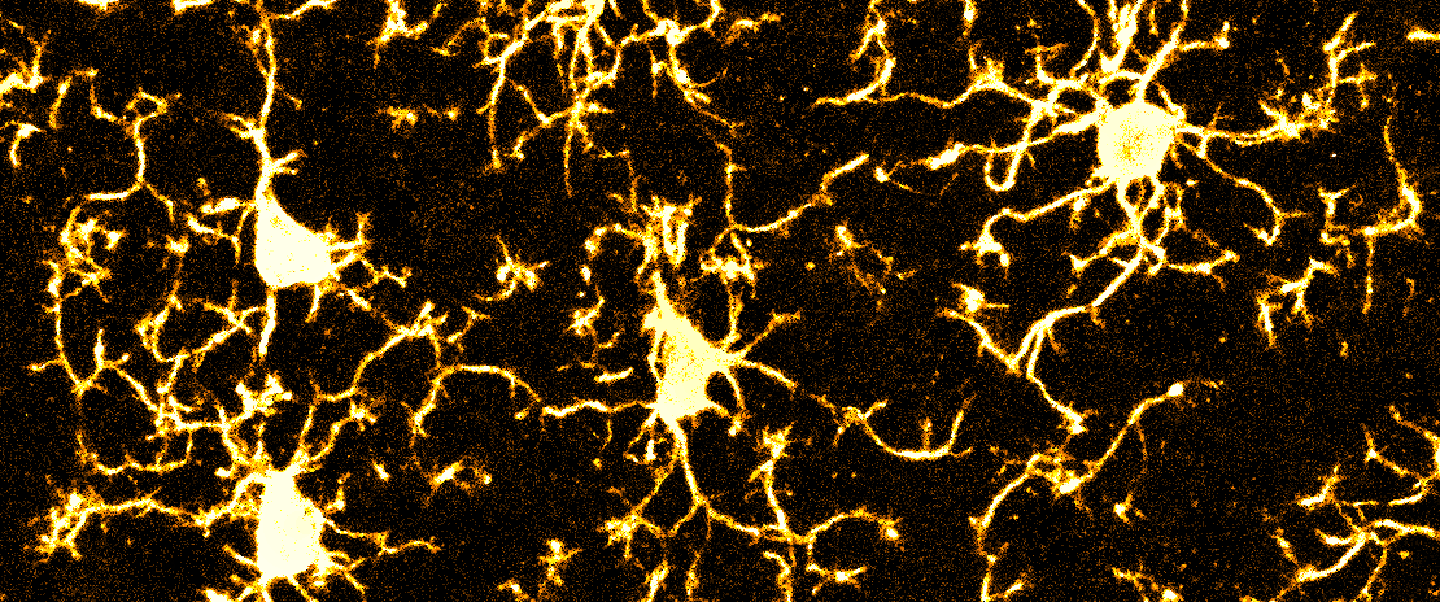Neuroinflammation and Neuroinfection

The central nervous system consists of diverse cell types, such as neurons, microglia, astrocytes and oligodendrocytes that continuously interact with each other. These collaborative interactions are a prerequisite for normal brain function. If these interactions are disturbed by endogenous (e.g., metabolic changes) or exogenous (e.g., infection and trauma) stimuli, pathological network states might lead to the development of neurological or psychiatric symptoms.
Within this research focus, we will address the role of neuro-immune interactions in health and disease. Particularly, we focus on the role of microglia – the resident immune cells of the brain – in shaping the structural and functional features of other cell types in neural circuits. Microglia can interact with other immune cells entering the brain, such as lymphocytes and NK cells, which might affect microglial states. Depending on these states, microglia interact with neurons through soluble factors and/or direct physical contact sites during both resting state or inflammatory conditions. Here, neurotrophic viral infections represent a major inflammatory stimulus, which severely affects neural circuits. In this context, we will assess how both endogenous and exogenous stimuli regulate neuro-immune interactions.
In an interdisciplinary effort with our collaborating partners the following points will be addressed:
- Microglia/Neuron-interactions determine the ability of neural networks to express synaptic plasticity. Although the microglial impact on synaptic transmission has been well characterized, their role in regulating cellular excitability remains widely unknown. Here, we will assess how the metabolic and inflammatory tissue state affects direct and/or indirect microglia/neuron-interactions and subsequently controls neuronal excitability and gene expression. We aim at revealing the therapeutic potential of microglia depletion on inflammation-related network defects. On the other hand, the effects of microglia depletion on the flexibility of neural networks under physiological conditions will be tested.
- Various viruses, such as HSV-1 and SARS-CoV-2, target the central nervous system and cause acute or persisting infections. Here, we investigate the neuronal effects of viral infection and persistence. Our experimental strategies will test for infection-induced plasticity defects, which presumably cause maladaptive changes in neural circuits. By unraveling the underlying mechanisms, we aim at establishing novel perspectives for therapeutic approaches in virus-related neural deficits.
- Tissue cultures are suitable in vitro models of the central nervous system that allow for experimental strategies covering long time scales. Therefore, we intend to study long-lasting effects of persistent infections, e.g. in the context of therapy-induced viral silencing. Moreover, environmental and intrinsic determinants of viral reactivation and its impact on the integrity of neural networks will be studied with respect to cellular interactions in tissue of the central nervous system.
In summary, we will elucidate the influence of acute or persisting viral infections and other inflammatory stimuli on neuronal transmission and plasticity, which ultimately aims at the implementation of novel therapeutic strategies in the treatment of inflammation-related network dysfunction, e.g. in neurodegeneration and epilepsy.
Key publications:
Microglial Cytokines Mediate Plasticity Induced by 10 Hz Repetitive Magnetic Stimulation. Eichler A, Kleidonas D, Turi Z, Fliegauf M, Kirsch M, Pfeifer D, Masuda T, Prinz M, Lenz M, Vlachos A. J Neurosci. 2023 Apr 26;43(17):3042-3060. doi: 10.1523/JNEUROSCI.2226-22.2023. Epub 2023 Mar 28.
Interleukin 10 Restores Lipopolysaccharide-Induced Alterations in Synaptic Plasticity Probed by Repetitive Magnetic Stimulation. Lenz M, Eichler A, Kruse P, Strehl A, Rodriguez-Rozada S, Goren I, Yogev N, Frank S, Waisman A, Deller T, Jung S, Maggio N, Vlachos A. Front Immunol. 2020 Dec 16;11:614509. doi: 10.3389/fimmu.2020.614509. eCollection 2020.
Denervated mouse dentate granule cells adjust their excitatory but not inhibitory synapses following in vitro entorhinal cortex lesion. Lenz M, Galanis C, Kleidonas D, Fellenz M, Deller T, Vlachos A. Exp Neurol. 2019 Feb;312:1-9. doi: 10.1016/j.expneurol.2018.10.013. Epub 2018 Oct 25.
Monitoring and Modulating Inflammation-Associated Alterations in Synaptic Plasticity: Role of Brain Stimulation and the Blood-Brain Interface. Lenz M, Eichler A, Vlachos A. Biomolecules. 2021 Feb 26;11(3):359. doi: 10.3390/biom11030359.